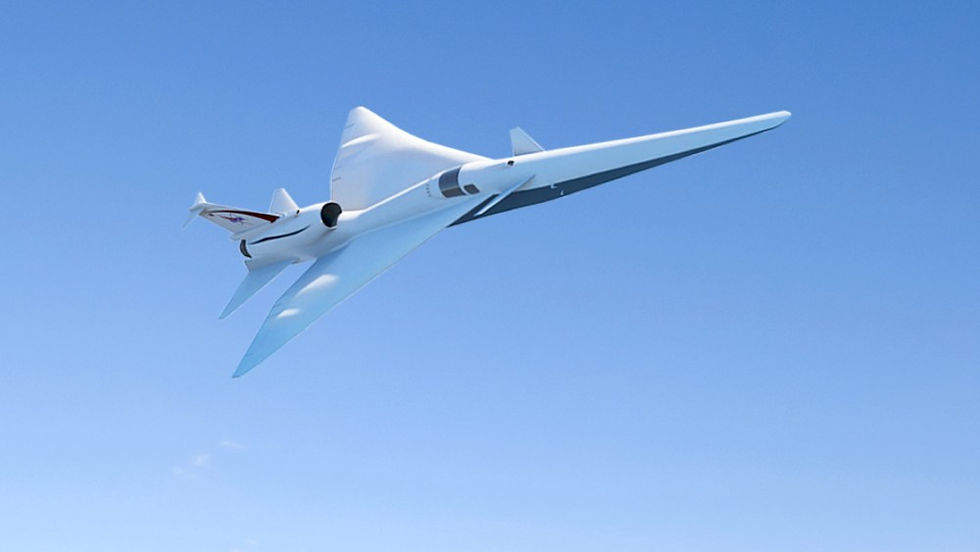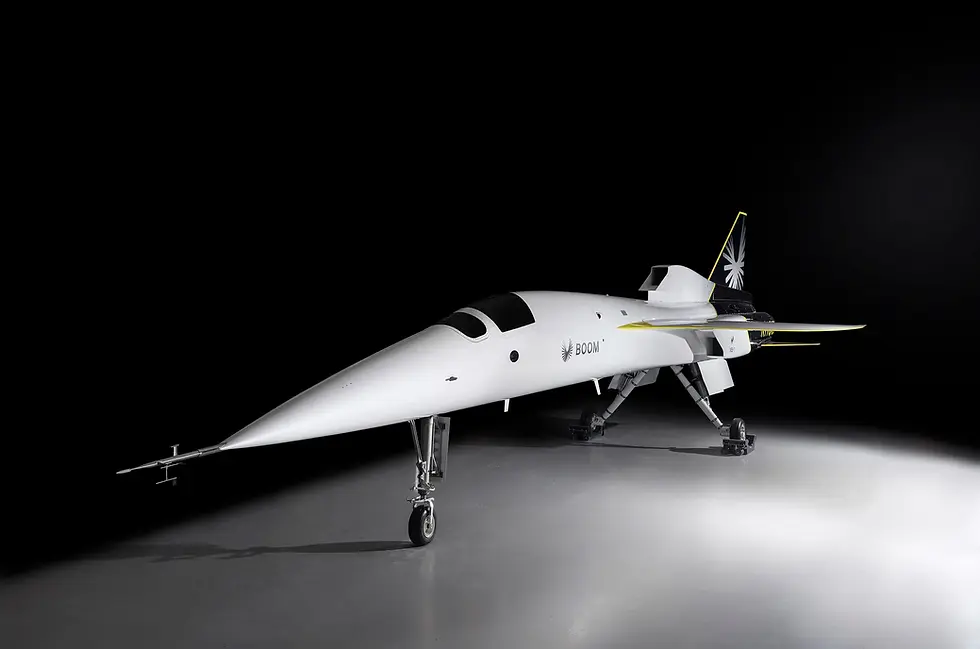NASA's X-59: The Quiet Supersonic Jet
- Apr 14, 2023
- 2 min read

NASA's X-59 supersonic jet is set to make its first test flight later this year, with the aim of minimizing the explosive sound that's generated when an aircraft breaks the sound barrier. The space agency has partnered with Lockheed Martin to create a design that breaks the sound barrier quietly, making the sonic boom more of a "sonic thud" similar to the sound of a car door closing. The X-59 is just under 100 feet long and is more streamlined than previous supersonic jets, making it the potential template for commercial supersonic jets of the future.
The X-59 uses "Quiet SuperSonic Technology" (QueSST) and has been designed to reduce and redistribute shock waves by changing the shape of the plane, and is equipped with a NASA-built and designed "external vision system." The cameras above and below the aircraft will create a real-time view of the front of the plane, while sensors feed data to a high-tech, heads-up display on an HD screen. The X-59's 13-foot engine will power the jet as it flies at altitudes around 55,000 feet, with a cruising speed of Mach 1.4, or 1,066 mph.
While a range of aviation companies, from juggernauts to startups, are working on supersonic travel, it's unlikely that the X-59 will have an impact on the latest generation of supersonic aircraft. Environmentalists are opposed to the mission, as quiet supersonic technology would reduce noise pollution, but supersonic travel still burns more jet fuel than a typical commercial flight.
Despite opposition, United Airlines has partnered with Boom Supersonic to work toward trans-Atlantic and Pacific flight by 2029. American Airlines has also put down deposits on Boom's 88-passenger Supersonic Overture aircraft, while in Japan, several companies have formed Japan Supersonic Research to launch a supersonic passenger jet by 2030.

Los Angeles-based Exosonic is developing an Air Force 2 supersonic jet with the U.S. Air Force. Spike Aerospace in Boston recently received FAA approval to test a design for an 18-passenger business jet with supersonic quiet technology. One company working on supersonic flight, Aerion Supersonic, folded in 2021 due to economic challenges following the COVID-19 pandemic.
Overall, the X-59 QueSST airplane could be a game-changer in the world of supersonic jets, providing a solution to the noise problem that has prevented supersonic overland flight for decades. However, the environmental impact and fuel consumption of supersonic travel are still major concerns that must be addressed before supersonic jets become a reality for commercial travel.


